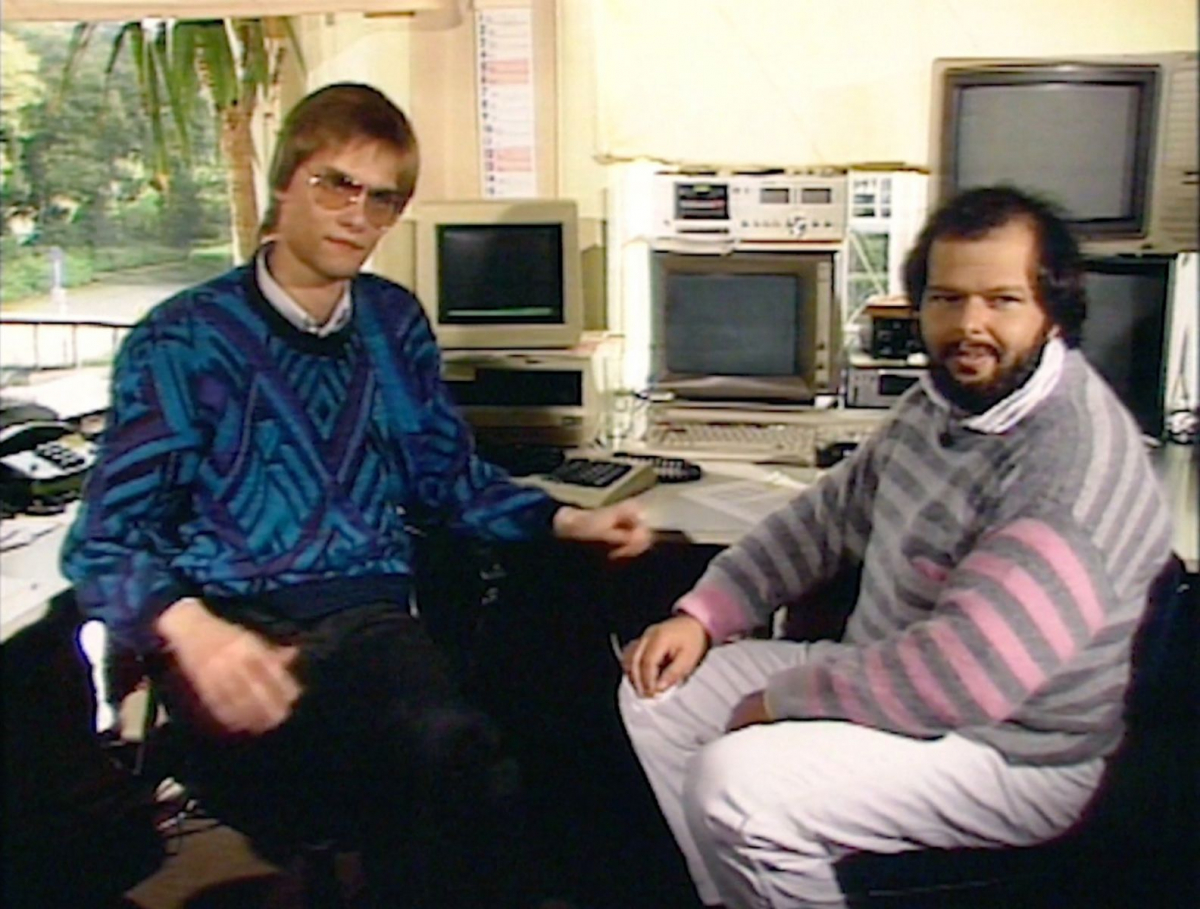5 moments from the history of the CCC
The Chaos Computer Club is celebrating its birthday. What has evolved from the early days of the internet to the present day.
The CCC will be 40 years old on September 12, 2021 – a good occasion for a look into the eventful past of the “galactic[n] Community of Living Beings for Freedom of Information and Technology Assessment, ”as the club describes itself in its Twitter biography.
Contents
- 1 1. The beginnings of the Chaos Computer Club: Komputerfrieks, unite!
- 2 2. The Haspa coup: Friendly hacking into the screen text
- 3 3. NASA hack and KGB hack: The crisis is beginning to emerge
- 4 4. Nedap-Hack 2006: The CCC is asked for an expert opinion for the first time
- 5 5. The network continues to grow – and with it the topics of the CCC
1. The beginnings of the Chaos Computer Club: Komputerfrieks, unite!
The word computer is still spelled with K in Germany when Herwart Holland-Moritz alias Wau Holland placed an advertisement in the taz on September 7, 1981 – and thus initiated the first meeting of the future CCC. As part of the Tuwat Congress in Berlin, a small gathering of interested parties will take place, “so that we as computer freaks no longer scurry around in front of us without coordination”, so the text of the call. On September 12, 1981, the unofficial founding of the club took place in the Berlin premises of the taz, but after the kick-off meeting the geographical center of the movement was Hamburg. A few years later, in April 1986, it was officially registered as an association for better legal positioning. The aim of the association: “To promote freedom of information and a human right to at least worldwide unhindered communication,” it says today on the official CCC website.
The first magazine of the affiliated “Compumaniaks” appears even before the association is officially founded: In February 1984, issue number one of the Data thrower printed. There should be no fixed publication rhythm, about “every 4 to 8 weeks” depending on the participation one wants to fill the four A4 pages, so the announcement in the first edition. Since October 2006, the club has provided “all data throwers that we were able to get hold of in the PDF version” for Download ready.
Two somewhat thicker printed works also appear in 1985 and 1988: In the “Hacker Bibles” with the subtitles “Tangled cables are healthy” and “The new Testament” In addition to more detailed opinion articles, interviews and much more, detailed instructions are also collected – for example the one for the so-called “data toilet” in the first Bible. The illegal self-made modem is a clear statement against the telecommunications regiment of the Federal Post Office at the time, which only allows modems that have been tested and approved by them at high prices.
2. The Haspa coup: Friendly hacking into the screen text
In November 1984 take themselves Wau Holland and Steffen Wernéry presented the teletext system (BTX) launched by the Post last year. According to their own statement, a program error caused them to get the BTX access data of the Hamburger Sparkasse. You create a chargeable CCC page and set up a program through which the Haspa account accesses the page every three seconds. Within one night, this results in damage of 135,000 D-Marks – which the two hackers ultimately do not claim, according to their convictions. The person in charge of the post, Erik Danke, remains convinced until the end that it was not a hack, but that the access data was spied – but the Post has to improve one way or the other, and the CCC is in the media echoed by the specifically conjured up known to the general public.
In the same year the first Chaos Communication Congress takes place as a central meeting.
3. NASA hack and KGB hack: The crisis is beginning to emerge
In 1987, the CCC turned to the Office for the Protection of the Constitution after a group of hackers approached the club: They had gained access to computers from NASA, ESA and Swiss CERN via a security gap in the systems of the Digital company, but were now afraid the extent and consequences of their action. Mediation should take place under the wing of the CCC, a list of the affected sites will be sent to the CIA. However, Cern filed a complaint, numerous house searches followed, CCC press spokesman Wernéry was even arrested in Paris and was only released three months later.
In the so-called KGB hack, which partially coincides with the NASA incidents, a group of hackers sells data from the West to the Russian KGB. The 23-year-old Karl Koch, who works under the pseudonym Hagbard Celine and founded the Hanoverian branch of the club, is also involved in this campaign. In March 1989 the responsible group was crushed by the police. Koch, who had been addicted to drugs for many years and was under severe psychological stress, was found cremated a little later, and finally suicide was officially established as the cause of death, but rumors of possible outside influences also emerged.
Both events influence the mood in the club, and mutual trust is damaged.
4. Nedap-Hack 2006: The CCC is asked for an expert opinion for the first time
In the years that followed these events, the club was decentralized. From 1990 East and West hackers networked, including a new branch in Berlin. In 1998 the so-called GSM hack succeeds in cloning telephone cards. The hacker Tron, who is found dead a little later, is also involved in this project. While the authorities also rate his death as a suicide, there are still doubts from his personal environment years later. In 2001, in the year of the 20th anniversary, the CCC founder Wau-Holland also died at the age of 49 from the consequences of a stroke.
The CCC takes other events into its repertoire and positions itself increasingly politically, for example through Demonstrations. 2004 CCC member Dirk Heringhaus puts in the data sling Gaps in Telekom’s security system open minded. “For a year now, the author has repeatedly informed Deutsche Telekom of the security gaps in confidence. Instead of eliminating their causes, however, only a few symptoms were combated, ”says the club’s press release, which puts Telekom under public pressure – the leak that is finally fixed is not only private users, but also, for example affected by the BND.
In 2006 the CCC demonstrated, together with a Dutch foundation, how voting computers from the Nedap company can be manipulated – the devices were also used in the 2005 general election. As a result of the Nedap hack, the CCC is for the first time in its history by the authorities document asked, in the end, the use of the voting computer is in retrospect as unconstitutional classified.
5. The network continues to grow – and with it the topics of the CCC
A slightly different addition to the data thrower caused a stir in 2008: As a protest against the storage of fingerprints in e-passports, the CCC produced a fingerprint dummy from thin film and included it in the booklet. According to the CCC, the imprint shown on it comes from none other than the Federal Minister of the Interior at the time, Wolfgang Schäuble – it was removed from a water glass at an event. Schäuble himself is not very impressed by this, but the campaign still manages to provide the CCC with a media platform for its criticism.
In the following years, the club, that of a few “bustling Frieks”, became an institution over 8,000 members has grown with various digital-political projects such as data retention, the state Trojan or contact data storage in the wake of the corona crisis. The last high-profile decision: In the future, the CDU will no longer be informed of any security gaps that have been discovered. The background was a criminal complaint by the party against IT security expert Lilith Wittmann, who had discovered a serious vulnerability in the software of the election campaign app CDU Connect.
The network that the Komputerfrieks entered in 1981 is now hardly recognizable – and the CCC members are unlikely to run out of lobbying for their convictions in the next 40 years.



